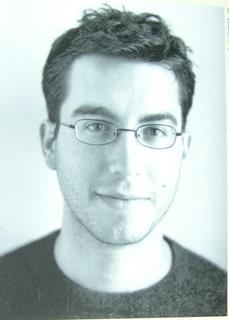
Hardcover: 368 pages
Publisher: Houghton Mifflin (April 4, 2005)
After he published Catch-22 in 1961 until his death in 1999, the duration of Joseph Heller’s literary career was spent trying to live up to the notoriety and achievement of his first novel. Critics generally only offered back-handed, watered down compliments, always engaging in a comparison to his first masterpiece.
Such situations are not uncommon to any artistic field, least of all the literary community. Thus, that just three years after he garnered world-wide acclaim for Everything is Illuminated, 26 year old and Brooklyn resident Jonathan Safran Foer published his second novel is at once an extremely courageous and an incredibly naïve move. The novel, Extremely Loud and Incredibly Close, has all the same humor and pseudo avant-garde stylistics that made his first novel so successful. In fact, Extremely Loud and Incredibly Close is probably exactly what most of Foer’s fans sought from him – but it was exactly what he shouldn’t have given them.
Extremely Loud and Incredibly Close follows the impertinent but loveable Oskar Schell, a nine-year old whose business card lists his occupations as inventor, jewelry designer, jewelry fabricator, amateur entomologist, Francophile, vegan, origamist, pacifist, percussionist, amateur astronomer, computer consultant, and collector of rare and other things. That Oskar is a jack of all trades but master of none is an appropriate metaphor for Foer’s novel as a whole: just as his character dabbles in everything but excels at nothing, so does Foer produce a inconsistent and at times frustrating second effort that will leave casual readers smiling, while more demanding readers will be left wondering if Foer has regressed, bought too much into his own hype, or if Everything Is Illuminated wasn’t that good to begin with.
Oskar’s father died in the 9/11 World Trade Center terrorist act. The novel rotates around Oskar’s unmitigated pain at the loss and his search to find some way to keep the memory of his father alive. He begins a search across all of New York in an attempt to hunt down the answer to a mysterious key he finds hidden in his father’s closet. Along the way he meets a host of magical realistic characters, some of which are charming and endearing, while others are just downright annoying.
That inconsistency is the greatest flaw of Extremely Loud and Incredibly Close. The same schizophrenia that overwhelms Oskar’s thoughts so too consumes Foer’s writing. The novel at times is extremely entertaining and incredibly moving, as when Oskar hits on an older woman or throws in random French phrases accrued from his private lessons. But the novel is undercut by a conventional and predictable plot, replete with sappy storylines, melancholic indulgences and a general bogarting of the 9/11 tragedy’s power for its own sentimental artistic means. There’s a disingenuous sub-thread running through the novels pages that a good editor would have picked out.
Foer throws in literary allusions like he’s name dropping at an exclusive night club. Oskar is clearly an homage to the lead character of Gunter Grass’s Tin Drum, but did Foer’s Oskar really have to carry a tambourine everywhere he went to mimic Grass’s drum playing renegade? Haphazard touches like this abound in Extremely Loud and Incredibly Close and it causes the reader to wonder whether Foer is paying homage to literary forerunners, or just self-promoting himself as ex
 tremely well-read and incredibly smart. There’s no deftness to the allusions, only a hodge-podge of rather loosely related references.
tremely well-read and incredibly smart. There’s no deftness to the allusions, only a hodge-podge of rather loosely related references.But the allusions would only be a minor detraction if the rest of the novel were better. And while Foer certainly uses mixed-media effectively in some places, he’s often too cute by half and much less original than he realizes. Yes the novel is broken up with pictures of everything from the collapse of the towers to the Staten Island Ferry crash, and these splices often carry great emotional gravity, but Ishmael Reed did the same thing in a much more inventive way in Mumbo Jumbo, all the way back in 1971. And Foer seems to throw some pictures in at random. What made Everything Is Illuminated so delightful was that Foer was able to create his own atmosphere and emotion. In Extremely Loud and Incredibly Close, its certainly questionable whether we feel for Oskar because Foer’s writing evokes us to, or because the 9/11 event is so charged with emotion on its own.
There are historical sideshows as well, which seem forced and heavy handed. Oskar’s grandparents survived the Dresden bombing and therefore, this enables Foer to link 9/11 to a grander picture of war as pure futility. Oskar makes a report on Hiroshima to his class as well, yet again invoking another catastrophe. But just as the literary allusions often fell short, so too do these rather historically shallow connectors come up short. In trying to show how all wars are similar in their pointlessness and wasted bloodshed, Foer glosses over the differences and complexities of conflict and the world in general, which leave any historically minded reader disappointed and suspect of Foer’s historical veracity. He seems more committed to writing a book fit for Hollywood production, than a well researched and thoroughly thought out narrative. At moments, Foer seems to be pandering to a Ron Howard like audience, ready for the next uplifting, Beautiful Mind scene to set them on their way.
Extremely Loud and Incredibly Close is certainly worth reading and any frustration towards Foer comes only out of the fact that he is indeed an extremely talented and incredibly gifted writer. But just as The Life Aquatic revealed aspects of Wes Anderson’s aesthetic that were false and rather sappy, so too does Foer’s second novel reveal a tendency to rely more on gimmick than substance. Whereas Heller produced many novels after Catch-22 that were art in their own-right, hopefully Foer will exceed the promise of Everything Is Illuminated and progress into all new literary territory. Extremely Loud and Incredibly Close shows that he’s standing still at the moment, but his youth gives ample grounds for thinking he might fully reach his future promise.
1 comment:
How do you feel about Safran co-opting the character of Chaz Tenenbaum?
Post a Comment